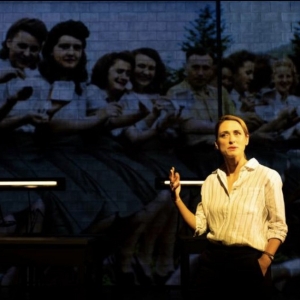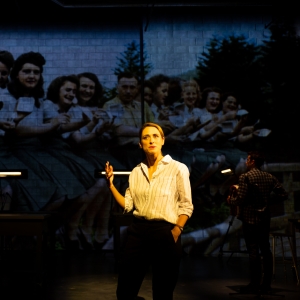Here There Are Blueberries 2024
Opened: May 13, 2024Closing: June 30, 2024
Here There Are Blueberries - 2024 Off-Broadway History , Info & More
New York Theatre Workshop
79 East 4th Street New York, NY 10003
In 2007, a mysterious album featuring Nazi-era photographs arrived at the desk of a U.S. Holocaust Memorial Museum archivist. As curators unraveled the shocking truth behind the images, the album soon made headlines and ignited a debate that reverberated far beyond the museum walls. Based on real events, Here There Are Blueberries tells the story of these historical photographs—what they reveal about the perpetrators of the Holocaust, and our own humanity.
Here There Are Blueberries - 2024 - Off-Broadway Cast
FEATURED REVIEWS FOR Here There Are Blueberries
HERE THERE ARE BLUEBERRIES: A NEW, INVALUABLE HOLOCAUST STAGE DOCUMENTARY
9 / 10
Presented without an intermission – clearly, Kaufman wants no interruption of the mounting intensity – the documentary is an invaluable addition to Holocaust literature. It’s made even more so by the excellent ensemble, all conveying the Tectonic Theater Project’s gravity.
Here There Are Blueberries Theater Review. The Holocaust through a different lens
7 / 10
Taube eventually takes up as a personal mission to contact and convince other relatives, as it turns out, to little avail. The scenes with these others, in avoidance or in denial, are among the most difficult – until the end, when the show moves from this album, to a different set of photographs. These are among the very few taken of the Jews at the camp, and includes testimony by one of the survivors who is pictured in one of them, alongside her family members who did not survive. It is as if Moisés Kaufman, who is the son of Holocaust survivors, and his co-writer Amanda Gronich, shared some of the initial concerns of the Holocaust museum staff: A play about the Holocaust, even one that focuses on its perpetrators, cannot completely exclude its victims.
Here There Are Blueberries History
Other Productions of Here There Are Blueberries
| 2024 | Off-Broadway |
NYTW Off-Broadway Premiere Production Off-Broadway |
Here There Are Blueberries - 2024 Off-Broadway Awards and Nominations
| Year | Ceremony | Category | Nominee |
|---|---|---|---|
| 2024 | The Pulitzer Prize | Pulitzer Prize for Drama | Moisés Kaufman |
Videos





